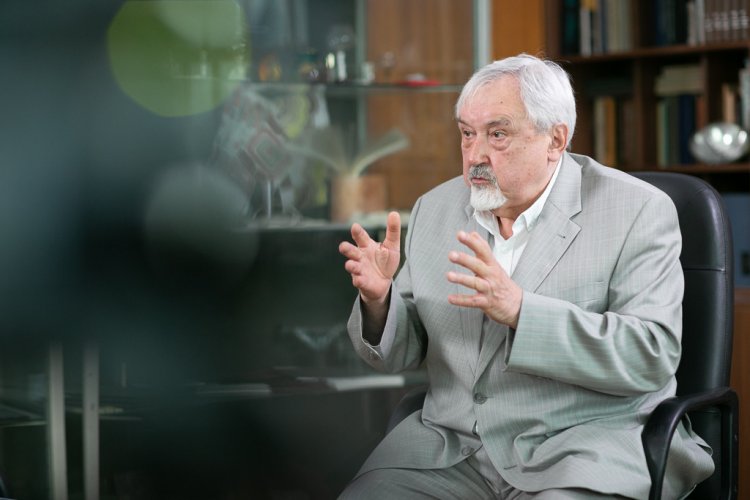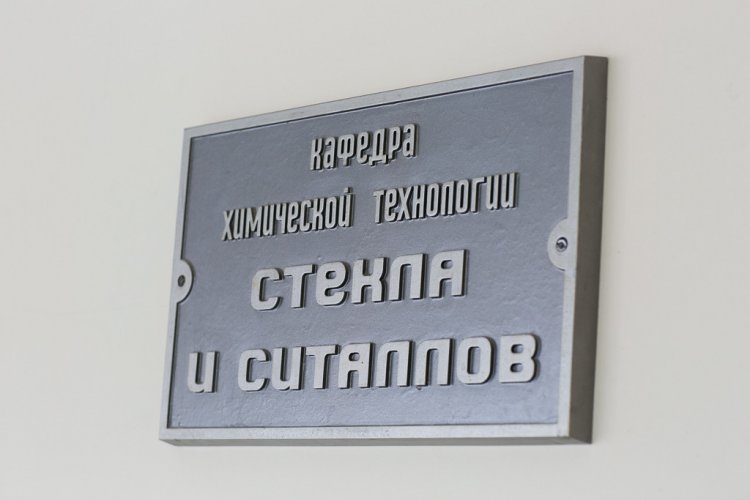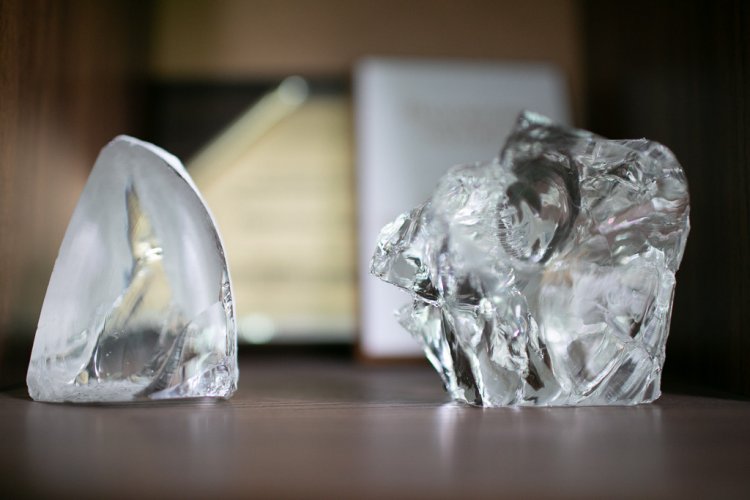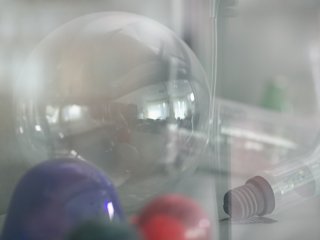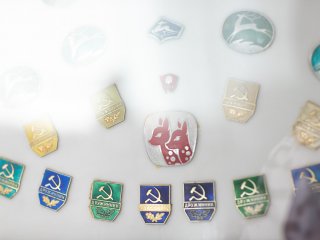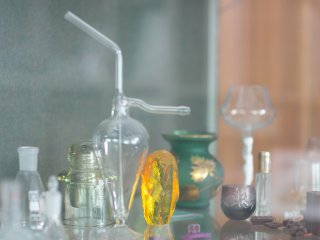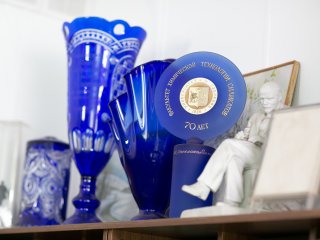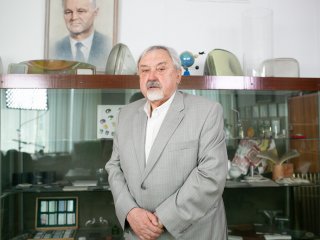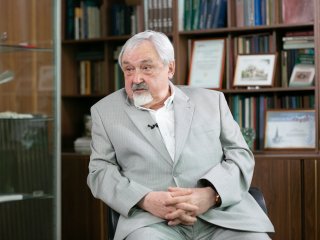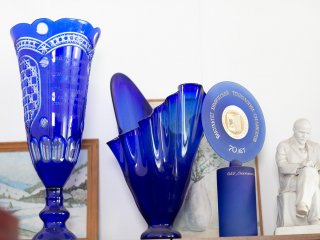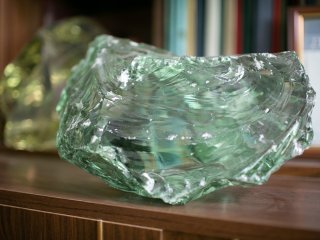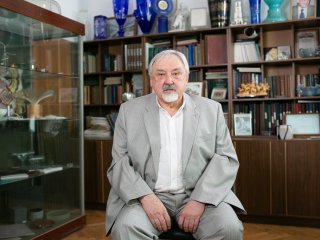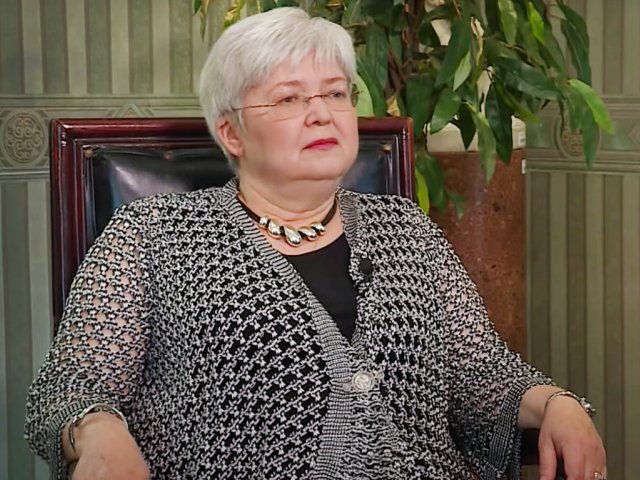As part of the Year of Science and Technology, June is dedicated to the topic of new materials and technologies. The site of the portal “Scientific Russia” once again went to the breeding ground of the latest chemical technologies – The Russian University of Chemical Technology named after Dmitri Ivanovich Mendeleev. Vladimir Nikolaevich Sigayev, the Head of the Glass and Sitals Department, told us the history of the department as well as how glass can be used to treat cancer, store gigabytes of data in glass, and create strong dental fillings and laser elements.
Vladimir Nikolaevich Sigaev is a doctor of chemical sciences, professor, and the head of the Glass and Sitals Department at the Russian University of Chemical Technology named after D.I. Mendeleev.
—Vladimir Nikolaevich, tell us about when and how the Department of Chemical Technology of Glass and Sitals was created at RCTU?
— The Department of Glass is a legendary one. It was founded almost 90 years ago, in 1932, by the famous Soviet scientist, technologist #1 in the field of glass, Isaak Ilyich Kitaygorodskiy. Suffice it to mention that the ruby stars of the Moscow Kremlin were created on the basis of his developments related to glass coloring processes. I should remind you that the towers of the Kremlin were originally decorated with two-headed eagles. The builders of communism got to them only in 1937, and the eagles were replaced by metallic stars, which, however, were not visible at night and did not make a good impression at all. Therefore, it was decided to replace them by ruby-colored glass stars which fitted perfectly well into the architectural appearance of the Kremlin. It was a very beautiful design that complemented the brilliant work of Aristotle Fioravanti.
Let us return to the foundation of the department. 1932 was a landmark year not only in the context of its founding. It was the same year when the famous article by William Zachariasen, the largest scientist of crystal chemistry, who laid the foundation for the theory of the glassy state structure, was published. By the way, this two-page work remains the most cited article in glass science to date.
Kitaygorodsky, the founder of the department, worked as a chief engineer at a glasswork in Zaprudna near Moscow before the events of the 1917 revolution. Kitaygorodsky set up the production of light bulbs at this, judging by the preserved photographs, quite ruined facility. In fact, as they say today, he started the process of import substitution, and beginning from 1913 Russia has been using domestic light bulbs. After 1917, when the entire country was electrified under the GOELRO plan, they began to be called “Ilyich bulbs,” referring not to Isaac Ilyich, but to Vladimir Ilyich, which I find a major historical injustice.
Later, the activity of the department covered all the variety of glass technologies, including all the new challenges coming from the needs of instrumentation, medicine, and ecology. The main challenge was related to the improvement of sheet glass and organization of its multitonnage production (95% of all glass production is oriented on the creation of window sheet glass, i.e., glass used in architecture). The problem of sheet glass production was finally resolved with the aid of the so-called float technology, which makes it possible to obtain nearly perfect glass sheets up to six meters wide by melting the glass mass into liquid tin. In Russia, this problem has been solved when foreign companies came to the Russian market such as “AGC,” “Guardian,” “Pilkington,” etc. It is difficult to overestimate the contribution of Kitaygorodsky and his students in the development of sheet glass, electrovacuum, medical glass, foam glass, and seals.
The next head of the department was Professor Nikolay Mikheevich Pavlushkin, who guided the creation of textbooks on glass and sitals, many textbooks, by which (of course, with additions in the framework of new achievements) students study to this day. Let me remind you that it was Kitaygorodsky and Pavlushkin who became the pioneers of glass in Russia and were awarded with the Lenin Prize of the USSR.
— What are the sitals?
— Sital is a new class of materials, which was discovered in the late 50s, almost simultaneously in the United States by the famous Professor Stookey and in Russia by the equally famous Kitaygorodsky. Citals are glass-crystalline materials obtained by volumetric crystallization of glasses and consisting of one or more crystalline phases evenly distributed in the vitreous phase. The point is that glass technology allows us to get a product of a given shape, and if the composition of glass allows us to crystallize the resulting product according to the laws of vitrification, then we have a chance to improve its mechanical properties and strength manifold, while maintaining its transparency under certain conditions. As a rule of thumb, the product is immeasurably more durable. Moreover, sital has many crystalline body properties, and its functionality is significantly increased in comparison with glass. Therefore, this class of materials is of great importance for the development of a variety of industrial technologies. And the sital trend is rapidly developing and is considered one of the most science-intensive in glass physicochemistry.
One of the most striking examples of the uniqueness of the sitals is that they have practically zero coefficient of thermal expansion and preserve the transparency of glass.
— What does it mean?
— It means that when the temperature changes, the dimensions of a sital item do not. This is very important for creating astrophysical telescopes and gyroscopes that are widely used in aircraft and other location systems. By the way, specialists of our department have patented a new modification of sital, which keeps the value of the zero coefficient of expansion up to 600 degrees Celsius. And now we are implementing a project that is aimed at creating various waveguide circuits in a sital matrix that is immune to any temperature influences.
Employees of the department develop methods of super-strong connection of materials with the most different coefficients of expansion with femtosecond laser radiation. As a rule, solder glasses are used for joining materials (glass, ceramics, composites, metals and alloys), which, when heated, form a vacuum-tight connection that has good mechanical properties. But it turned out that using laser technology, it is possible to achieve much higher spot results, even if we are talking about materials with near-zero expansion coefficient values.
Let's return to the history of the department. After Pavlushkin, the department was headed by Pavel Djibraelovich Sarkisov, who was an academician of the Russian Academy of Sciences and the rector of Mendeleev University for a quarter of a century. Later, he became the president of RCTU. He was an iconic figure in both the University and the Academy of Sciences. Under his leadership, multi-tonnage productions of the new type of sital compounds – slag sitals – were created.
I have been the head of the department for the last nine years. I will allow myself to make a little joke and remember the first letters of the last names of all the previous heads of the department: Kitaygorodsky – K, Pavlushkin – P, Sarkisov – S, and Sigayev – S. It turns out the KPSS (the abbreviation of the Communist Party of the Soviet Union in Russian). At this point, I think, the history of the department will either stop, or it will change its paradigm.
— Aren't there any disciples?
— Oh, there are a lot of disciples! Today, there are about twenty productive young scientists working in the department. The older generation (except for me) has already retired. That is why I am training a new generation as best I can. I think I am successful in this.
The existence of any team requires funding. The technologies and materials developed at the Department of Glass and Sitals at RCTU are well financed, because they are very important for the country. The new stage of the department development is connected not only with glass melting in laboratory conditions, but also with creation of experimental and industrial technologies, which are realized directly on the department, in the furnace hall, within the framework of the program of low-tonnage chemistry development.
But this is not enough. It is very important to learn how to modify glass structure on a micro– and even nanoscale in predetermined places or in the whole volume in order to be able to create new properties in it, not typical for ordinary glass, i.e., to functionalize glass, as they say these days.
This field is probably the most science-intensive one in glass science, which is confirmed by the rapid growth of publications. The Department of Glass has been modifying the structure of glasses at the micro– and nanoscale for ten years and is among the world leaders in this field. Suffice it to say that we created systems for recording and reading data from glassy media.
This kind of research requires the most advanced physical research methods. Over the last two decades, materials scientists have been offered tremendous opportunities to study the submicrostructure of substances and materials, often at the atomic level. When I started my work, my PhD thesis in the mid-seventies was devoted to the description of the emergence and growth of crystallization nuclei, leading to the formation of the structure of sitals. At that time, it was considered a pioneering work, which was based on neutron diffraction methods. Today we can observe much finer details of the structure of glass subjected to various physical and chemical influences.
This is primarily relevant for the design of new materials for photonics, for the development of laser technologies, for the miniaturization of optical instrumentation, etc. The femtosecond laser can be used to modify the internal structure of glass without affecting the surface. Our department has been particularly successful in this area. Future applications of micro-modification of glass structure are the creation of ultra-stable optical memory, monocrystalline waveguides in the volume of glass matrix and complex architectures based on them.
A femtosecond laser beam can create certain defects in the volume of glass – the basis of new information technologies. These defects are called birefringent periodic nano-lattices, about 1 µm in size.
Self-portrait by I. I. Kitaygorodsky
— So, we're talking about glass-based data carriers?
—Yes. Imagine a quartz glass disk that you can use to record and store information forever. The beauty of this idea is that you can literally write data for eternity. This medium does not require rewriting. It is radiation resistant, and most importantly, it can withstand a temperature difference of 1,000 degrees. Such discs can store the entire history of mankind, all cultural achievements, movies, theater, operas (preferably good ones), the treasuries of all museums and so on. And the discs themselves can be stored forever and even outlive humanity.
The ability to record information in dozens of layers greatly increases the density of recording and the amount of information in the carrier. According to some estimates, a single disk can contain hundreds of terabytes.
Of course, we are just at the beginning of our journey. Besides us, the world's leading companies, such as Microsoft, are involved in similar developments, and we are all facing complicated problems. The process of recording on a carrier made of quartz glass is still taking too long. Our search for other glasses for which we could increase the recording speed was unsuccessful for a long time, until we discovered that nanoporous high silica glasses, which are fire resistant and for which the recording speed can be increased hundreds of times, could be an excellent alternative to quartz glass.
— Let's talk about medical applications of glass. As far as I know, your department's developments are also used in the medical field, including the treatment of oncological diseases. Tell us more about that.
— We have actually managed to implement the technology of local radiation therapy for cancer using yttrium-90 isotope in cooperation with the Bebig company. We were able to synthesize glass with a very high yttrium content. After grinding it into powder and spheroidizing it, we get microspheres with diameters strictly in the range of 20-32 microns. After being irradiated, the beta emitter, yttrium-90 isotope, is introduced into the core of the nuclear reactor.
— What for?
— This is the medicine itself, which is injected through the capillaries into the patient's liver. This is a complicated medical procedure, which you should better ask doctors about. The radioactive isotope yttrium-90, with a half-life of about two and a half days, is delivered to the hospital in a special lead package. The N.N. Blokhin Scientific and Research Center for Oncology. N.N. Blokhin Cancer Research Center performs such operations on a regular basis. Our difference from foreign medicines is that it has the higher content of yttrium in the glass and thereby it reduces the therapeutic dose.
As for the medicine, the department began work on creating a domestic industry of filling materials for dentistry. Today, they are mostly imported from abroad — in Germany, United Kingdom, and so on. We have just won a big competition under the Russian Government's Decree 218, and now we are going to solve this problem under the management of VladMiVa, Russia's leading manufacturer of medical devices for dentistry. One of our main tasks is to achieve a world-class quality of glass-based materials for dentistry while reducing the price of dental services many times over.
— If we speak about basic science, glass and the technology of its production have been known for many thousands of years. What is being researched now?
— I have already mentioned that subtle changes in the structure of glass in order to functionalize it are now being investigated. Today, the efforts of many scientists and technologists are aimed at developing miniaturized technologies for applications in information technology, optics, photonics, and medicine. We'll see how it will develop in the next 5-10 years. Personally, I am very concerned about whether it is possible to make a great technological miracle on a microscale — to learn how to penetrate glass with a laser beam in a stable and reproducible way and grow single-crystal structures of micron and submicron sizes in predetermined areas and create waveguide structures from non-linear optical crystals with low light attenuation inside a glass matrix.
Our recent work has shown the fundamental possibility of practical implementation of “eternal memory” in glass. Now we are facing the beginning of the stage of industrial technology creation, where new problems and new solutions will arise.
A huge potential for glass development comes from the demands of fiber optics and laser physics. This is a topic that requires separate consideration.
But it also applies to most traditional glass-related fields. There will always be a desire to improve the quality of sheet glass and enhance its properties by means of coatings; technologists will always try to increase the strength of aircraft glazing, reduce the weight of bottles while maintaining their strength.
The Earth's crust consists mainly of SiO2 silica. Fiber optic communication lines and fiber amplifiers are also based on SiO2. And we are about to create “eternal memory” which will also be based on SiO2. And almost all industrial glass is made on the basis of SiO2. Therefore, the class of materials called “glass-based materials” is doomed to an eternal future.
Photo: Andrey Luft/Scientific Russia
